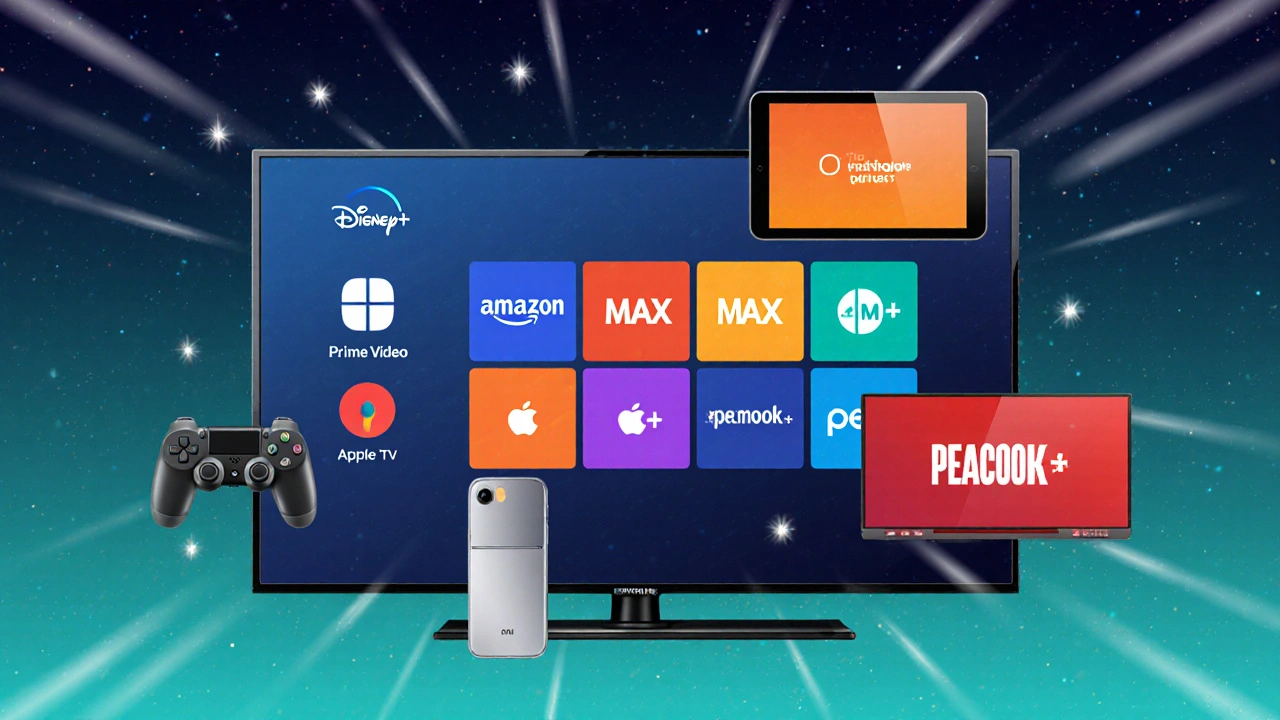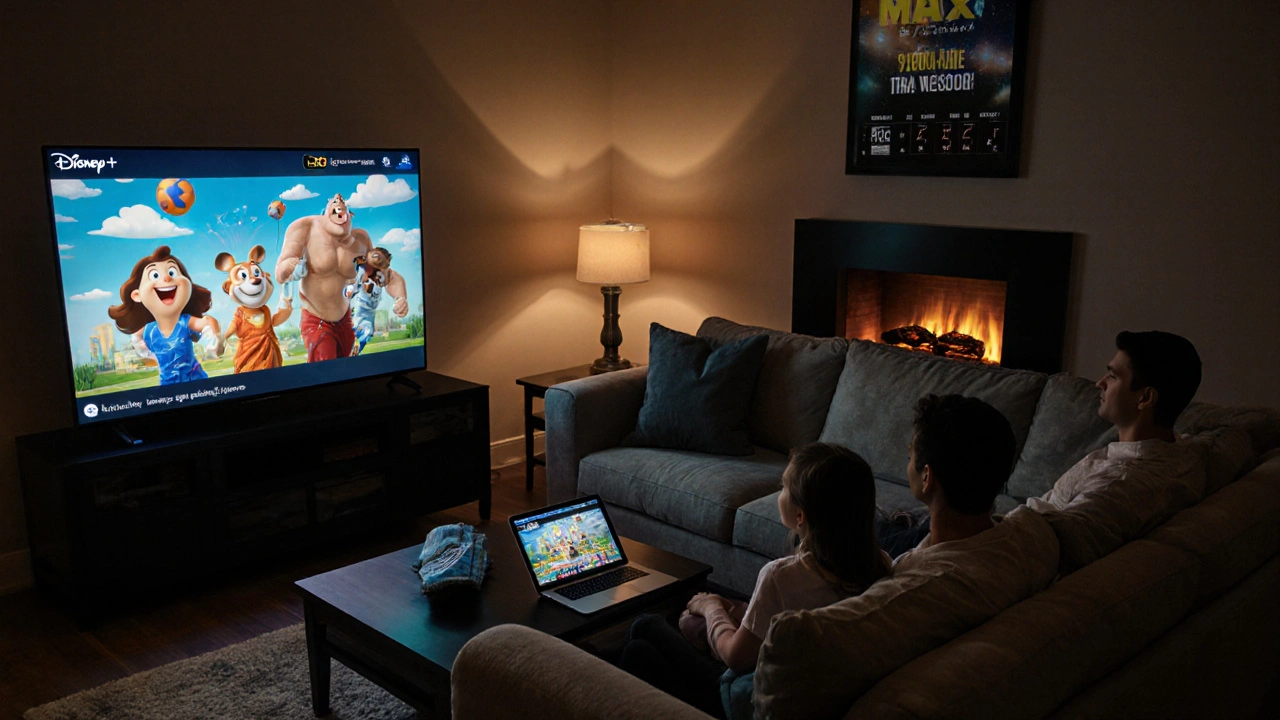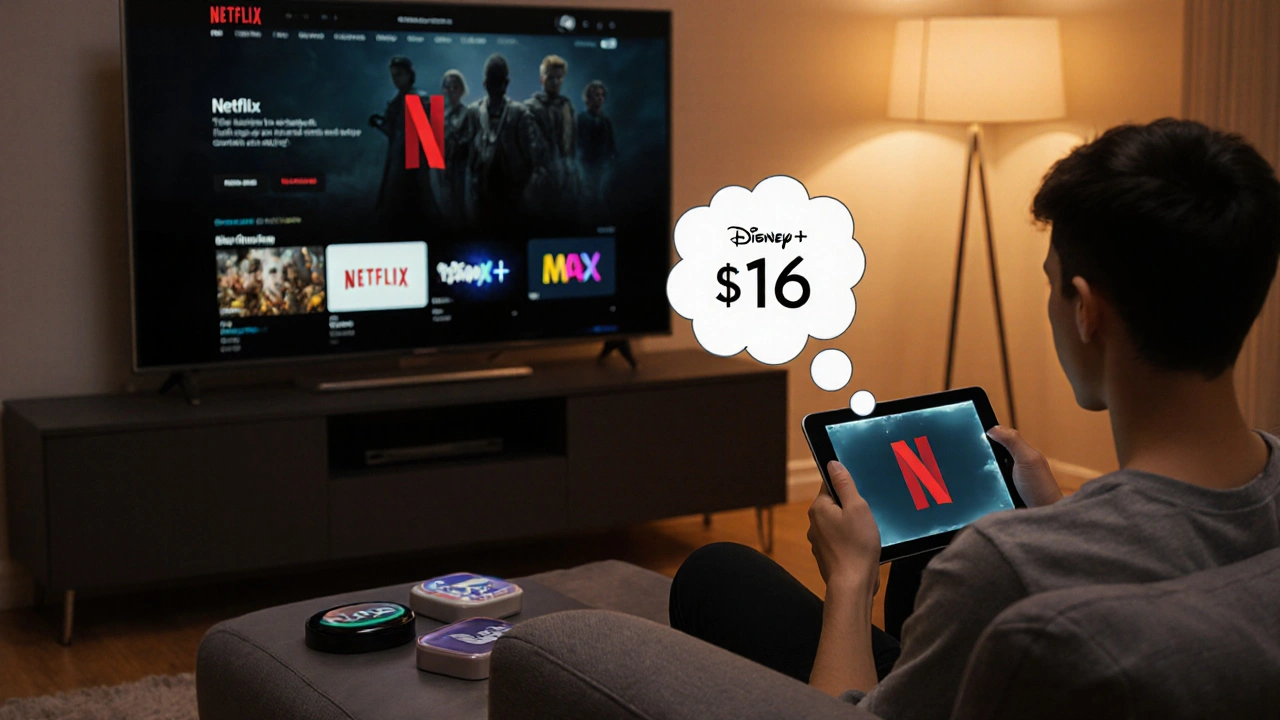Streaming Service Cost Calculator
Compare Your Monthly Costs
See how much you'd pay for streaming alternatives compared to Netflix
If you’re wondering whether there’s a subscription that outshines Netflix, you’re not alone. With price hikes, shifting content strategies, and new players entering the market, many viewers are hunting for a service that offers more bang for their buck. Below is a practical guide that walks you through the leading alternatives, compares key factors, and helps you decide which platform fits your viewing habits.
Why Look Beyond Netflix?
Netflix remains a powerhouse, but it’s not the only game in town. Here are the three most common reasons people start scouting other services:
- Cost pressure: Recent price changes have pushed the standard plan above $16 per month in the U.S.
- Content gaps: Some beloved franchises and newer releases appear exclusive to rival platforms.
- Feature fatigue: Users want more simultaneous streams, offline downloads, or 4K HDR support without extra fees.
Knowing which of these pain points matters most to you will shape your ideal replacement.
Defining the Major Players
We’ll focus on six services that consistently rank as the top Netflix alternatives in 2025.
Disney+ is a streaming service launched in November 2019 that aggregates Disney’s classic library, Pixar, Marvel, Star Wars, and National Geographic content. It’s praised for family‑friendly programming and a growing slate of original series.
Amazon Prime Video is the on‑demand video component of Amazon Prime, offering a mix of licensed movies, original series, and the option to rent or buy titles not included in the subscription. Launched in 2006, it now serves over 200million members worldwide.
HBO Max (rebranded as Max) is WarnerMedia’s premium streaming brand that combines HBO’s catalog with new Max originals, Warner Bros. movies, and DC content. It debuted in 2020 and is known for high‑budget, critically acclaimed series.
Apple TV+ is Apple’s subscription service that focuses exclusively on original programming, ranging from dramas to documentaries. Since its 2019 launch, the platform has earned multiple Emmy awards.
Paramount+ is the streaming arm of Paramount Global, offering CBS live streams, a deep back‑catalog of movies, and originals like "Star Trek: Picard". It entered the market in 2021.
Peacock is NBCUniversal’s ad‑supported and premium service that mixes classic TV sitcoms, recent films, and originals such as "The Office" (full library) and "Dr. Death". Launched in 2020, it provides a free tier with limited content.
Quick Comparison Table
| Service | Monthly Price (USD) | HD/4K Support | Simultaneous Streams | Exclusive Content Highlights |
|---|---|---|---|---|
| Disney+ | $7.99 | HD, 4K HDR | 4 | Marvel series, "The Mandalorian", Pixar movies |
| Amazon Prime Video | $14.99 (incl. Prime) | HD, 4K HDR | 3 | "The Lord of the Rings" TV, "Jack Ryan" |
| Max (HBO Max) | $15.99 | HD, 4K HDR | 3 | "Succession", "The Last of Us" game adaptation |
| Apple TV+ | $6.99 | HD, 4K HDR | 2 | "Ted Lasso", "Severance" |
| Paramount+ | $5.99 (Basic) / $9.99 (Premium) | HD, 4K (Premium) | 3 (Premium) | "Star Trek: Discovery", CBS live sports |
| Peacock | Free (ad‑supported) / $4.99 (Premium) | HD (Premium) | 2 (Premium) | Full "The Office" library, "Yellowstone" (Season1) |

How to Choose the Right Service
Use this simple decision tree to match your priorities:
- Budget first? If you want the cheapest plan with decent variety, Disney+ or Peacock’s free tier are strong contenders.
- Family‑friendly catalog? Disney+ dominates with kid‑safe titles and parental controls.
- Premium drama and limited‑series? Max delivers award‑winning series and blockbuster movies the same night they hit theaters (subject to a brief window).
- Tech ecosystem lock‑in? Apple TV+ integrates seamlessly with iOS devices and offers the lowest cost for Apple users.
- Live TV & sports? Paramount+ includes CBS live sports and news, while Peacock offers NBC news streams.
Most viewers end up subscribing to two services to cover gaps-e.g., Disney+ for family titles + Max for adult dramas.
Cost‑Effectiveness in Real‑World Scenarios
Let’s break down three common household patterns and calculate monthly spend.
- Solo binge‑watcher: A single user who watches a mix of movies and TV series. Best combo: Apple TV+ ($6.99) + Disney+ ($7.99) = $14.98. This undercuts Netflix’s standard plan while delivering exclusive titles.
- Family of four: Kids need child‑safe shows; adults want premium dramas. Best combo: Disney+ (4 streams) + Max ($15.99) = $23.98. Shared on the same Wi‑Fi, no extra accounts needed.
- Sports & news junkie: Needs live events plus on‑demand movies. Best combo: Paramount+ Premium ($9.99) + Peacock Premium ($4.99) = $14.98, plus a one‑off purchase for any missing blockbuster.
These combos illustrate that by mixing services you can often stay under $25 per month and still get a broader library than Netflix alone.
Potential Pitfalls and How to Avoid Them
Switching platforms isn’t always smooth. Watch out for these common issues:
- Fragmented libraries: A title may be split across services. Keep a simple spreadsheet of where your favorite shows live.
- Device compatibility: Not all platforms support older smart TVs. Check each service’s device list before committing.
- Trial‑to‑pay traps: Some free trials automatically convert to paid subscriptions. Set a calendar reminder to cancel if you decide it’s not for you.

What About Regional Availability?
Being in Auckland, NewZealand, you have access to all six services listed, but there are subtle differences. For example, Disney+ offers a localized “Kids” profile with stricter content filters, while Max’s US‑only sports rights don’t appear in NZ. Always verify the local catalog before buying.
Final Recommendation
If you must pick just one service that beats Netflix on most fronts, **Disney+** offers the best price‑to‑content ratio, especially for families. However, for a truly balanced lineup, combining Disney+ with Max (or Paramount+ if live TV matters) provides the widest range of exclusive series, blockbuster movies, and flexible streaming options.
Frequently Asked Questions
Is Disney+ really cheaper than Netflix?
Yes. Disney+ costs $7.99 per month in the U.S., compared with Netflix’s $15.49 for the standard plan. The lower price comes with a more focused library, but the addition of Marvel, Star Wars, and Pixar makes it a strong value for many viewers.
Can I get 4K HDR on any of these services?
All listed platforms-Disney+, Amazon Prime Video, Max, Apple TV+, and Paramount+ (Premium tier)-support 4K HDR streaming, provided you have a compatible device and sufficient bandwidth (minimum 25Mbps).
Do any of these services offer a free tier?
Peacock offers a free, ad‑supported tier with a limited selection of movies and TV shows. The other services all require a paid subscription, though many provide 30‑day free trials.
Which platform has the best original series?
For award‑winning dramas, Max leads with titles like "Succession" and "The Last of Us." Apple TV+ punches above its weight with "Ted Lasso" and "Severance." Disney+ excels in genre‑specific originals, especially Marvel and Star Wars spinoffs.
How many simultaneous streams do I get with each service?
Disney+ allows up to 4 concurrent streams, Amazon Prime Video 3, Max 3, Apple TV+ 2, Paramount+ 3 (Premium), and Peacock 2 (Premium). This matters if multiple family members watch at the same time.
Now that you’ve seen the numbers, the content, and the real‑world costs, you can decide whether a single Netflix alternatives service or a small combo finally beats Netflix for your household.



Comments
Having read through the detailed breakdown, I find myself reflecting on the broader implications of the streaming wars, especially as they intersect with our daily budgeting habits. The author points out that Disney+ offers a compelling price‑to‑content ratio, a claim that resonates when you consider the depth of the Marvel and Star Wars libraries. Yet the analysis also reminds us that no single service can truly replace the eclectic mix that Netflix once held, especially for niche indie films. It is noteworthy that the suggested combos, such as Disney+ paired with Max, keep the total under $25, which is a compelling figure for most families. Moreover, the emphasis on simultaneous streams highlights a practical concern for households with multiple viewers. The article’s inclusion of a cost‑calculator widget signals a shift toward interactive decision‑making tools, something we rarely saw a few years ago. When the piece mentions that Peacock’s free tier exists, it subtly acknowledges the persistence of ad‑supported models in an otherwise subscription‑driven market. The discussion of regional availability, specifically the New Zealand example, underscores the importance of geographic licensing, a factor often overlooked in generic comparisons. I also appreciate the candid warning about fragmented libraries, prompting readers to perhaps keep a simple spreadsheet. In terms of device compatibility, the reminder to verify before committing is a practical tip that can save many headaches. The author’s closing recommendation of Disney+ for its price‑to‑content ratio aligns with the earlier data, offering consistency throughout the piece. While the article could have delved deeper into the impact of original series on subscriber retention, the current scope provides a solid starting point for most viewers. The philosophical question of “what do we value in entertainment?” lingers, inviting personal reflection beyond the numbers. Finally, the structured decision tree serves as a useful heuristic, allowing readers to prioritize budget, family‑friendly content, or premium drama as they see fit. Overall, the guide balances quantitative cost analysis with qualitative content considerations, delivering a comprehensive overview for anyone looking to navigate the evolving streaming landscape.
Your summary is spot‑on; the cost calculator really helps visualize savings. It’s also good to note the importance of checking device compatibility early. Keeping an eye on simultaneous streams can prevent family arguments later.
While the data presented is thorough, one cannot ignore the fact that Netflix’s algorithmic recommendations remain unrivaled-though, of course, that is merely a trivial observation. The suggested combos indeed appear economical, but does bundling truly capture the spirit of diverse taste? Perhaps the author overestimates the appeal of Disney’s franchise dominance; after all, not everyone enjoys superhero sagas. Nonetheless, the article delivers a concise roadmap for the budget‑conscious viewer.
Netflix’s price hikes are an outright robbery.
You’re absolutely right, and it’s disheartening to watch a beloved platform inflate its fees without proportional gains in original content. Still, the alternatives offered-especially the dramatic pairing of Disney+ with Max-bring fresh narratives that can rekindle our love for streaming. Imagine binge‑watching Marvel’s cinematic universe while simultaneously diving into the gritty political intrigue of Succession; that contrast is exhilarating! Moreover, the casual tone of the guide makes it easy for anyone, even those new to streaming, to grasp the nuances. The emphasis on family‑friendly options, like Disney+, ensures that even the little ones can enjoy safe programming. I also love the recommendation to keep a simple spreadsheet; it adds a touch of organization amid the chaos. Ultimately, these combos provide a richer tapestry of storytelling than a single subscription ever could.
The calculator is a neat tool, and the Disney+ + Max combo stays under $25. It’s a solid, budget‑friendly recommendation.
Indeed, the interactive element, which allows users to input household size, primary and secondary services, and instantly view savings, demonstrates a commendable blend of functionality and user‑centric design; however, one must also consider the varying bandwidth requirements, especially for 4K HDR streams, which can strain older routers, and the necessity of compatible devices, which not everyone possesses, thereby potentially limiting the applicability of such a calculator; consequently, while the tool is valuable, its efficacy is contingent upon these technical prerequisites, and users should verify their setups before committing to a particular combination; thus, the calculator serves as an informative aid rather than a definitive decision-maker.
The article ignores the fact that many people still prefer traditional cable over streaming services.